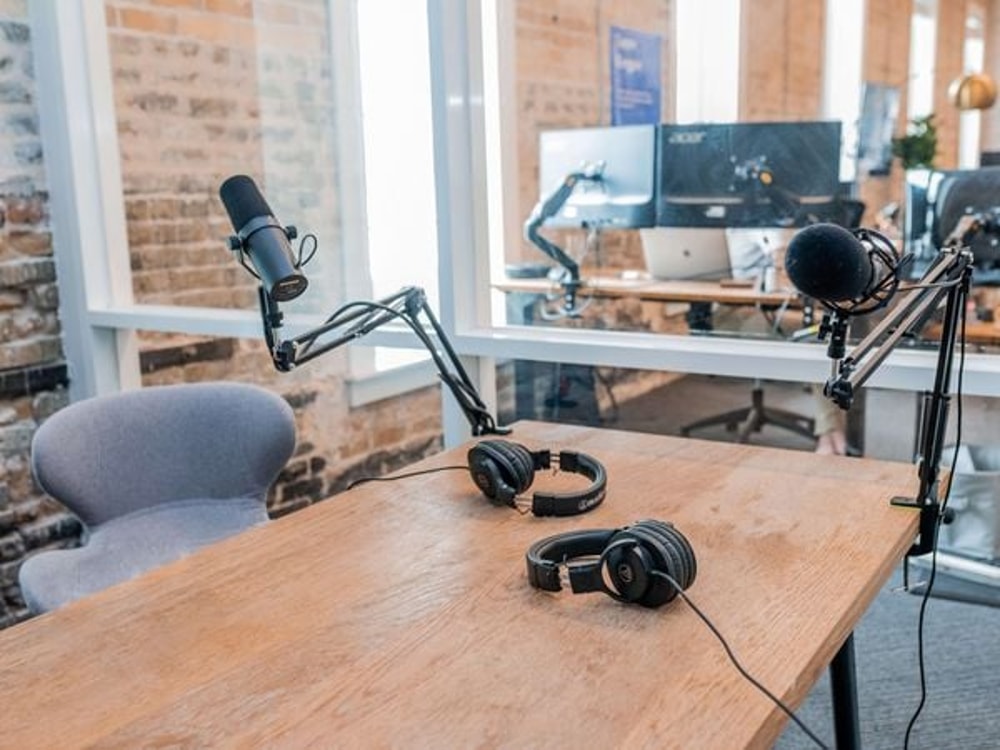So, why should you jump headfirst into podcasting? Podcasts offer deeper engagement and allow you to capture your audience’s attention for 30-plus minutes, something that’s not easily achievable with blog posts or visual content. They also provide a multitasking option, as listeners can enjoy podcasts while cooking, driving, or engaging in other activities. Moreover, starting your own podcast can open up new audiences, offer less competition, and create a sense of intimacy with your listeners.
Investing in the Right Podcasting Gear
Before you start podcasting, it’s essential to invest in the right equipment to ensure the quality of your audio. While platforms like Anchor and Podcastle allow you to record with just your phone and a lavalier microphone, a quality podcast will benefit from better equipment. Consider following the MVP concept—starting with the minimum viable product and gradually upgrading as your podcast grows.
One of the most critical components of podcasting gear is the microphone. The microphone you choose will greatly impact the sound quality of your podcast. USB microphones, like the Blue Snowball by Blue Microphones, are a popular and affordable option, starting at around $70. It’s recommended to purchase a dynamic front-firing microphone with good reception to capture clear voice recordings without unwanted background noise. Additionally, investing in a headphone/microphone headset can be beneficial for co-hosted podcasts or interviews. If you opt for a standalone microphone, consider getting a separate set of headphones and a comfortable microphone stand.
Recording, Uploading, and Promoting Your Podcast
Once you have the necessary equipment, it’s time to prepare for recording your podcast. Start by determining the format and content of your podcast. Podcasts can take various forms, such as one-man shows, co-hosts, guests, or call-ins. Having two or three hosts is a common format that promotes engaging conversations and prevents the monotony of a single-person podcast.
To ensure a well-organized and professional-sounding podcast, it’s helpful to plan your episode beforehand. Create an outline or roadmap of the topics you want to cover and the flow of the episode. While scripting everything may not be necessary, having a structure to guide your conversation will help you stay on track.
When it comes to recording, consider using tools like Zoom to facilitate virtual interviews or conversations. Zoom allows you to record your calls, and you can use editing applications like Audacity or GarageBand to clean up the audio, add music, and finalize your podcast.
To promote and share your podcast, take advantage of the sharing options provided by the hosting site you choose. Platforms like Soundcloud offer built-in sharing options to social media platforms like Twitter and Facebook. You can also embed the audio directly into your blog posts, synchronizing your podcast with your written content. Providing a full transcript or a list of topics and resources covered in the podcast can enhance SEO and accessibility.

The Ideal Length, Frequency, and Best Day to Post a Podcast
Determining the ideal length, frequency, and best day to post a podcast can contribute to its success. While there’s not an extensive amount of research specifically focused on podcasts, some general guidelines can be applied.
When it comes to podcast length, the average listener stays connected for approximately 22 minutes (Stitcher). TED Talks, which have a maximum duration of 18 minutes, are based on the belief that our attention spans can’t sustain focus on a single presenter for much longer. Aim for a podcast length that keeps your audience engaged and doesn’t exceed their attention span.
Regarding the best day to post a podcast, a small trend has emerged from analyzing the posting schedules of the top podcasts in the iTunes store. Sixty percent of podcasts with regular schedules tend to release new episodes early in the week, with Tuesday being the most common day. This coincides with the release of new music on iTunes, potentially attracting more visitors who might discover new podcasts.
In terms of frequency, a weekly posting schedule seems to be the most popular among the top podcasts. Forty percent of the top 25 podcasts publish episodes once a week, while some opt for twice a week. Establishing a regular and consistent posting rhythm is crucial for maintaining audience engagement.
Podcasts to Learn From
Learning from successful podcasts can provide valuable insights and inspiration for your own podcasting journey. Here are a few notable podcasts and what sets them apart:
- The Tim Ferriss Show: Tim Ferriss’ podcast has captivated audiences with over 600 episodes, often lasting more than an hour. Despite the longer duration, Ferriss consistently engages his listeners through captivating conversations.
- Modern Love: The podcast version of The New York Times’s popular column, Modern Love, features diverse storytelling and renowned voices like Saoirse Ronan and Maggie Smith. It showcases the power of storytelling in audio format.
Conclusion
Starting your own podcast is an exciting opportunity to engage with your audience in a unique and intimate way. Overcoming common fears, such as concerns about your voice, technical skills, and equipment costs, is possible with the right mindset and resources. By investing in quality podcasting gear, creating a well-structured episode, and effectively promoting your podcast, you can launch a successful and engaging podcast. Remember to consider the ideal length, frequency, and best day to post your episodes, and draw inspiration from successful podcasts in your niche. So don’t wait any longer—start your podcasting journey and connect with your audience in a whole new way.
